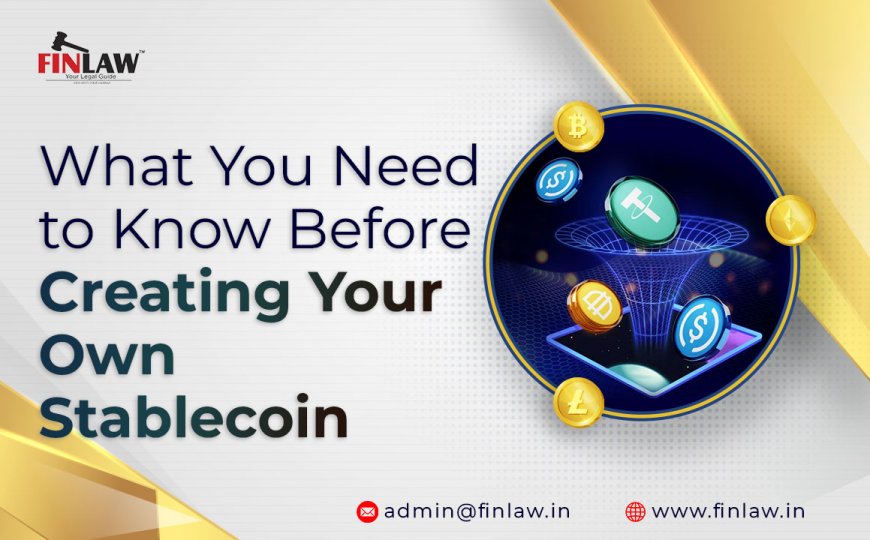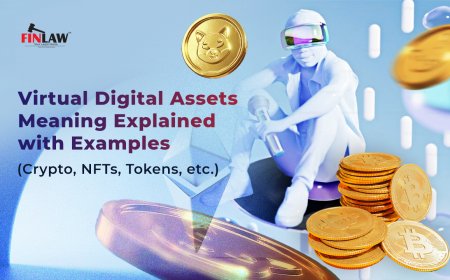What You Need to Know Before Creating Your Own Stablecoin
Want to create your own stablecoin in India? Learn everything you need—types, legal issues, tech stack, and compliance steps—in this 2025 expert guide.

In the rapidly evolving world of cryptocurrency, stablecoins have emerged as a crucial innovation bridging the gap between traditional finance and the volatile world of digital assets. While launching a meme coin or altcoin might sound like the trendier route, creating your own stablecoin is a far more strategic move—especially for businesses and fintech entrepreneurs in India aiming to innovate responsibly in Web3.
But before you dive in, there are important technical, legal, and economic considerations to understand. In this comprehensive guide, we walk you through everything you need to know before you create your own stablecoin—from types and design mechanisms to regulations and market positioning.
What Is a Stablecoin?
A stablecoin is a type of cryptocurrency designed to maintain a stable value by pegging it to a reserve asset like fiat currency (e.g., INR, USD), a commodity (e.g., gold), or even an algorithmic mechanism.
Unlike volatile cryptocurrencies like Bitcoin and Ethereum, stablecoins provide consistency in value, making them ideal for:
-
Cross-border payments
-
Remittances
-
DeFi lending platforms
-
Blockchain-based financial applications
Why Create Your Own Stablecoin?
Here are key motivations behind developing your own stablecoin:
1. Financial Inclusion
In a country like India, where a large population is still underbanked, a stablecoin tied to the Indian Rupee (INR) can promote easier access to digital finance.
2. Corporate Treasury Efficiency
Businesses can use stablecoins to simplify payroll, vendor payments, or cross-border settlements without exposure to crypto volatility.
3. DeFi or Web3 Projects
Building a DeFi protocol, gaming metaverse, or Web3 economy? Your own stablecoin can act as a native unit of account.
4. Branding and Ecosystem Control
Launching your stablecoin allows complete control over tokenomics, utility, and ecosystem governance.
Key Considerations Before You Start
Before jumping into development, consider the following pillars:
1. Type of Stablecoin You Want to Launch
There are three major types:
|
Type |
Peg Mechanism |
Examples |
|
Fiat-backed |
Backed 1:1 by fiat currency in a bank reserve |
USDT, USDC |
|
Crypto-backed |
Overcollateralized with volatile crypto assets |
DAI |
|
Algorithmic |
Maintains value using smart contract algorithms |
Terra (UST)* |
Note: Algorithmic stablecoins are highly risky (see Terra crash) and require robust economic models.
2. Collateral and Reserve Management
For fiat-backed stablecoins, you’ll need:
-
A trust account or custodian to hold INR or other fiat
-
Transparent auditing and reporting to maintain credibility
-
Possibly an NBFC or banking partnership for regulatory legitimacy
Legal and Regulatory Compliance in India
India has yet to release clear guidelines specific to stablecoins. However, as of 2025, here's what you should keep in mind:
Regulatory Frameworks That Might Apply:
-
RBI Guidelines: If you peg to INR, it may be considered as issuing a digital version of a currency—potentially violating RBI norms unless explicitly authorized.
-
FEMA & PMLA: Foreign investment and anti-money laundering laws will apply if dealing with offshore funds or users.
-
FIU Registration: If operating a VASP (Virtual Asset Service Provider), you need to register with FIU-India.
-
Information Technology Act, 2000: Especially for data storage, KYC, and cybersecurity compliance.
Tip: Consult a crypto compliance lawyer or fintech legal expert in India before proceeding.
Technical Architecture: How to Create a Stablecoin
Step 1: Choose a Blockchain Platform
Popular choices include:
-
Ethereum (ERC-20) – Robust, widely adopted
-
Binance Smart Chain (BEP-20) – Faster, cheaper transactions
-
Polygon (MATIC) – Scalable and India-friendly
-
Solana or Avalanche – Low latency, good for large-scale apps
Step 2: Smart Contract Development
-
Design minting and burning logic
-
Include audit trails
-
Ensure security features like pause mechanisms and blacklists
Step 3: Integrate with Custodians or Oracles
-
Fiat-backed coins require real-time reserve audits
-
Use Chainlink or Witnet oracles to track reserves
Step 4: Tokenomics and Distribution
-
Decide on governance token vs. stablecoin
-
Set clear rules on issuance, redemption, and user rewards
Banking and KYC Integration
Indian laws require full KYC/AML compliance for any financial service. Ensure:
-
Users go through eKYC verification (via platforms like Signzy or Onfido)
-
You store data securely (ISO/IEC 27001 compliance)
-
Have clear user agreements and privacy policies
Challenges in India
Creating a stablecoin in India isn't just a technical project—there are real challenges to face:
1. Lack of Regulatory Clarity
The Indian government has yet to regulate or legalize stablecoins directly. Even indirect regulations via the RBI and SEBI make it difficult to operate with certainty.
2. Banking Restrictions
Most Indian banks avoid crypto-linked businesses due to past RBI circulars—even if those were overturned. You'll likely need offshore banking support.
3. Trust Issues
Users will demand proof of reserves, real-time audits, and transparency—especially post the Terra-LUNA fiasco.
Examples of INR-Pegged or India-Focused Stablecoins
Some early efforts or inspirations include:
-
XDC’s XUSD (pilot INR-peg)
-
INR+ by Instadapp (still in DeFi alpha stage).
-
Lakshmi Coin (conceptual, abandoned due to regulatory heat).
These examples show both the potential and regulatory risk of India-centric stablecoins.
Marketing and Adoption Strategy
Once launched, getting users to trust and use your stablecoin is key.
Strategies to Consider:
-
Partner with crypto exchanges in India for listing
-
Create DeFi integrations (yield farming, lending protocols)
-
Educate users on how it's safer than volatile coins
-
Promote real-world use cases (merchant acceptance, payroll, etc.)
Future Outlook
With India exploring a CBDC (Central Bank Digital Currency) and increased adoption of UPI for digital payments, stablecoins in India must find a complementary role, not a competing one.
A well-structured stablecoin project can support:
-
Cross-border commerce
-
Global payroll for Indian developers
-
Tokenized real-world assets
But it must be built with compliance-first thinking, a scalable architecture, and a clear purpose.
Final Checklist: Ready to Create Your Own Stablecoin?
Here’s what you should have before launching:
-
Clear use case (payments, DeFi, corporate usage)
-
Decision on peg type (fiat, crypto, algo)
-
Regulatory roadmap (FIU registration, legal entity, etc.)
-
Banking/custodial partner for reserves
-
Blockchain and smart contract stack
-
KYC, audit, oracle integration
-
Marketing and ecosystem partnerships
Conclusion
Creating your own stablecoin is no small feat, especially in a market as nuanced and complex as India. But with the right blend of compliance, technology, and purpose, it can become a game-changing asset for your Web3 vision. Whether you're a fintech startup, a blockchain developer, or a corporate innovator, the future of money in India might just begin with your stablecoin.
Frequently Asked Questions (FAQs)
Q1: Is it legal to create a stablecoin in India?
Currently, there is no specific law that prohibits it, but it must comply with RBI, PMLA, and IT Act regulations. It's best to consult a lawyer.
Q2: Can I peg my stablecoin to INR?
Technically yes, but it may be treated as currency issuance and attract RBI scrutiny. Consider offshore pegging or hybrid models.
Q3: How much does it cost to build a stablecoin?
Basic development might start from ₹5–10 lakhs, but total costs (legal, compliance, audit, marketing) can go up to ₹50 lakhs or more.
Q4: Are stablecoins safer than Bitcoin?
They’re designed to be less volatile, but not risk-free. Algorithmic coins especially carry high depeg risks.
What's Your Reaction?



















